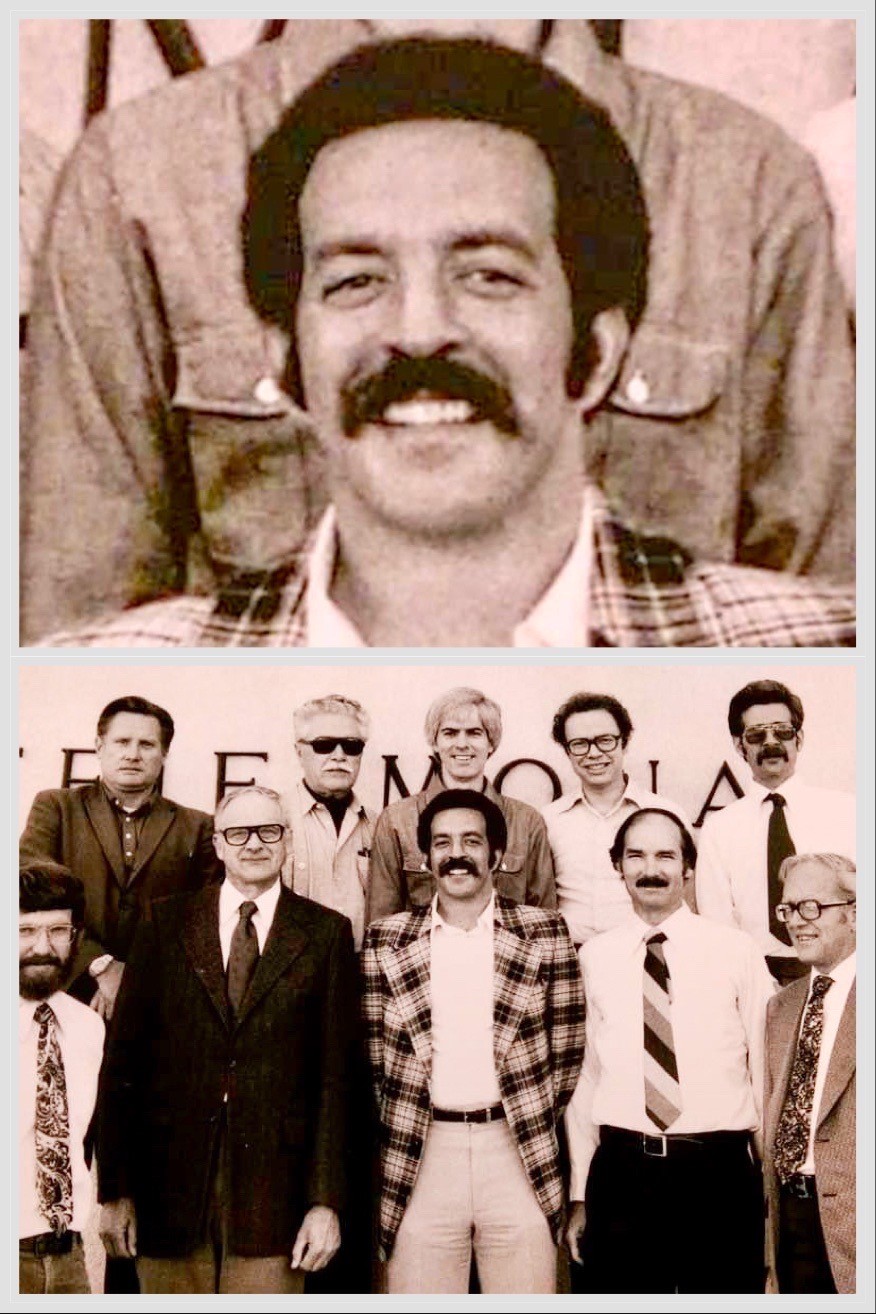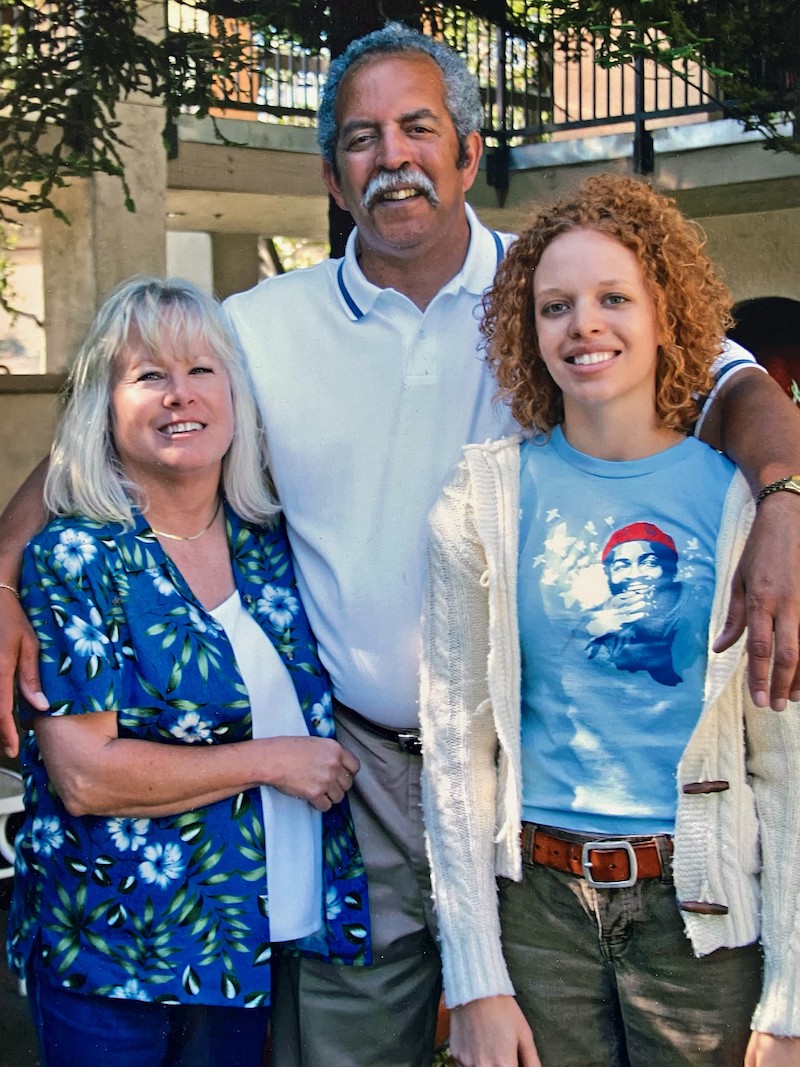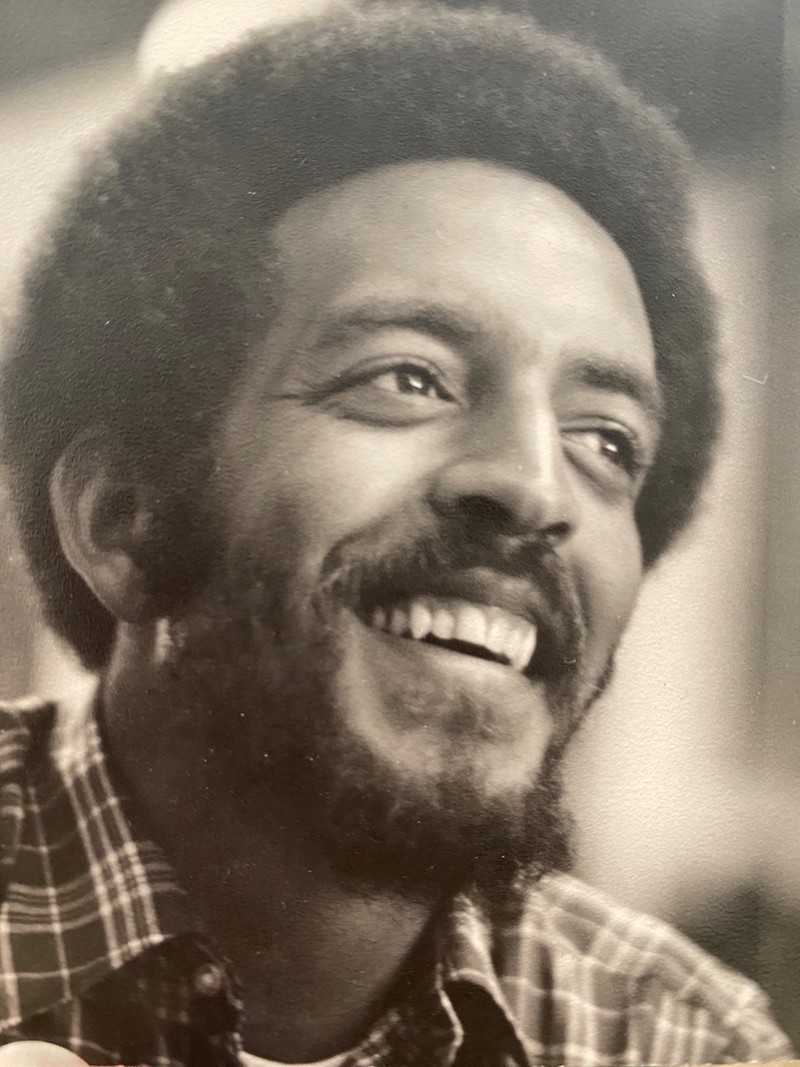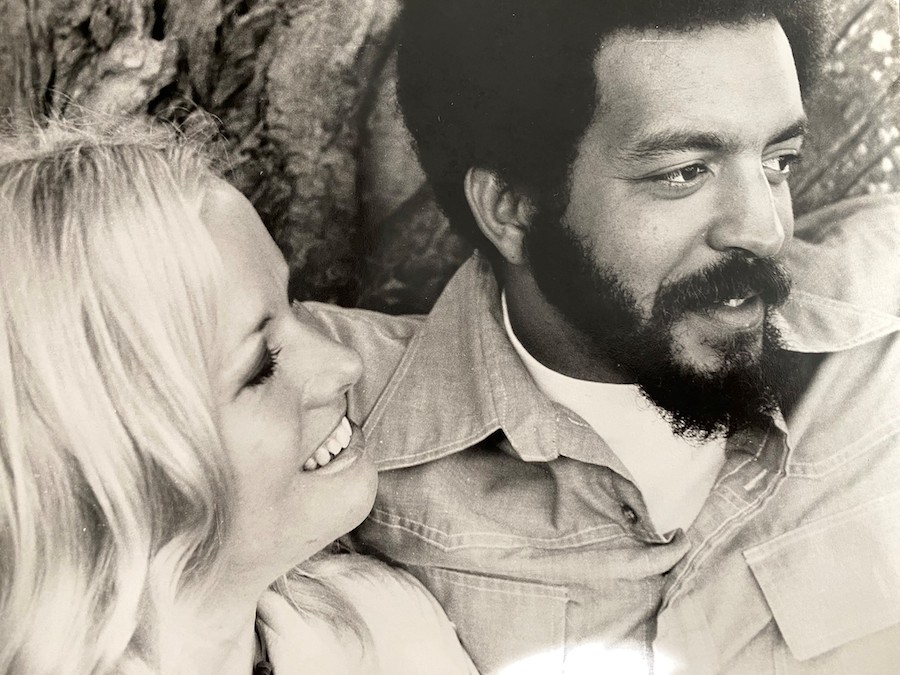During Michael Coray’s more than 40 years at the University – he was the first black professor of history the University ever hired in 1972, and later was the University’s first special assistant to the president for diversity – his was always the voice you didn’t necessarily want to hear – but needed to hear.
Coray, a groundbreaking figure at the University in more ways than one, passed away on Jan. 14 at the age of 78.
His legacy can be seen in how far the University has come when it was announced in May 1972 that Coray, then only 28 years old and a visiting assistant professor at Syracuse University, had been hired as the University’s first black professor of history and to lead the University’s new ethnic studies program.
Coray, in a January 1973 Nevada State Journal newspaper interview, said he came to Reno for “a chance to do something different, a challenge” as he brought more diversity to the University’s curriculum that soon would include not only courses in African- and Afro-American history, but also by the fall 1973 semester would see new courses in the history of tropical Africa and the history of Spanish-speaking people in the Western United States.

Coray had an initial budget of $1,000 for the ethnic studies program. He recruited other faculty, from the Department of History and from other departments across campus, to help teach the new courses. Faculty who did teach the classes did so on an “overload” basis.
“We’re totally dependent on the goodness and charity of the faculty,” Coray said. Yet the effort, he said, was worth it: “If the University offers classes in the majority experience, it should offer classes in the minority experience. Knowledge is a two-way street.”
THESE WERE WORDS THAT MICHAEL CORAY knew a little something about. From an early age, he had seen all aspects of what education could offer.
He and his sister, Peggy, had grown up in a single-parent household in the Watts section of south central Los Angeles. Coray’s mother, Harriett, after his parents divorced, worked as a maid in Beverly Hills, including at the mansion of the famed actress Barbara Stanwyck.
Young Michael always looked forward to the end of each week, when his mother would bring home books given to her from Stanwyck’s personal library. He was an avid reader and while in high school, in addition to excelling in sports, he showed early writing promise when an essay he wrote was chosen the winner in a city high school essay writing contest. He earned a $500 first prize.
Yet, because of the hard economic circumstances his family faced, Coray wasn’t sure he would ever go to college.
“It was a very unplanned thing,” he said in 1973. “I didn’t find out I was going to college until two days after high school graduation.”
He was offered a scholarship to play basketball at UC-Santa Barbara. Yet Coray admitted later, his first year at UCSB was a disaster academically. He flunked out and was placed on academic probation.
“Only after I flunked out was it then that I found out that there was more to this academic stuff than met the eye,” he said.
He would persist at UCSB, changing his major four times, from first wanting to study zoology, to P.E., then political science. During his junior year, he happened to take an African history course, which changed the direction of his life. He became a history major, and used an academic scholarship to earn his degree.
“It has direct relevance to my life,” Coray said of the special personal connection he felt when he began studying the history of Africa, as well as the history of the experience of black Americans in America. “It is the caste of my identity. I have relatives in Africa. As a kid, I never believed that Tarzan stuff and people swinging through trees, with a white man jumping out of the jungle and the natives scattering.”
He was part of a growing movement in the United States by black Americans to better understand who they were, where they came from, and what their future could be. “Black Power” and “Black Pride” were not just catch-phrases for a young student like Michael Coray. As part of his studies, he traveled to Africa to research the culture and the people of East Africa. He came away with a greater understanding of who he was, and why the history that he was studying was so important to him.
“Three hundred and fifty years of the black experience in America was directed by whites toward convincing black people they were different and somehow inferior,” he said. “Reluctantly, blacks have turned the concept of “blackness” into a positive goal; blackness is something to be strived for – not something that one suffers.”
From the very beginning, Coray was discerning about how he viewed race relations in the country.
“I was pretty radical but also pretty individualistic,” he said in a 1995 interview. “I was not a fan of non-violent protest. Everything in my upbringing was if someone hit you, you hit him back. I was in the Malcolm X camp in terms of everything except the Nation of Islam. I just disagreed with the doctrine, which proclaimed all whites are devils.”
It was during this time, while working on his doctoral studies at UCSB, that Coray met his future wife, Suzanne, whom he would marry in 1973. He and “Suzi” would remain happily married to for nearly 50 years, until Coray died in January. The couple also had a daughter, Jena, a 2003 University graduate in English.

Coray would earn his undergraduate, master’s and doctoral degrees, all in history, from UCSB. His first few years at the University were not easy ones. The University’s first black professor, Ben Hazard, an art professor, was on faculty starting in fall 1969 but left to become the curator of education and special exhibits of the Oakland Museum during the summer of 1970. The University itself was overwhelmingly white, with barely 100 black students – about 1 percent of the institution’s overall enrollment – on campus in the early 1970s.
“Hell yes, I felt lonely,” he said in 1995. “I felt marooned, intellectually marooned.”
Progress in making the campus a more diverse place was slow and uneven, and by Coray’s standards, difficult to rationalize. On the one hand, the ethnic studies courses that Coray helped bring about in the early to mid-1970s provided part of the foundation, when combined with the forward strides made with the creation of a Women’s Studies Program in the 1980s, that would become today’s Gender, Race and Identity Program – one of the University’s fastest growing and most dynamic programs.
In 1986, Coray was one of five black professors at the University, along with 18 Asian faculty members, five Hispanic faculty members and one Native American faculty member. Female faculty comprised about 20 percent of all faculty members.
They were numbers that were improvements from the next-to-nothing figures that Coray had seen when he was first hired in 1972. It wasn’t enough, he said in a 1986 interview.
“The affirmative action on this campus has nothing to do with good intentions,” he said. “It can be measured, just like a faculty evaluation. What’s the bottom line? Don’t tell me what you want to do. What have you done? I’ve been around too long. I’ve heard the rhetoric too long.”
Coray called for a more concerted and strategic effort in minority faculty recruitment. He said Nevada’s demographic was changing, and was edging toward a 20 percent minority population. The University needed to do a better job of reflecting this shift, too.
“Affirmative action should be a part of general university recruitment, not simply shunted off to one under-staffed, under-budgeted office,” Coray said. “Minorities are taxpayers just like the rest of Nevadans. Why don’t they have parity in services, parity in representation? Despite what one might see in Nevada, we do not live in a white world. The more opportunity students have to get a glimpse of ethnic and racial diversity, the better they’re prepared for dealing with the kinds of questions that will face them in the workplace … and at the ballot box.”
IT WAS DURING THIS TIME THAT CORAY had established himself as a very well-known presence on campus. He was always a great lecturer. His lessons on U.S. History, as well as Black History, could seem almost like sermons. He took his teaching seriously, almost as an artist would. There would be long hours of writing out his class notes in longhand on yellow legal pads. He fully expected his students to participate in his lessons – to share, to discuss, to challenge, to dig through unnecessary artifice for what really made history become real. He always found truth in the not-so-obvious and in the unexplored or unexamined.
A 1995 interview caught him expressing these sentiments to the members of his History 455 class, “The African-American Experience, Part I”:
“What replaced slavery (after the American Revolution in the “North” of the United States) was not freedom, was not equality, was not justice,” he said. “Instead, the end of slavery in the North began to reveal something else for African-Americans. It actually ripped the mask off a more self-conscious face of white racism. It actually ripped the mask off economic greed … the deep-seated irrational fear of persons who were black.”
He called teaching one of the most fundamentally challenging disciplines a person could ever take up.
“Teaching,” he said after class, “is a profoundly tiring experience.” He went even further in 1973, explaining, “Teaching is probably one of the hardest jobs there is. Because a teacher has both an obligation to the students and the material covered – sometimes there is a contradiction.”
Whenever his students “got it,” and understood that his lectures weren’t lectures at all but rather were a series of questions, questions that he hoped his students would then ask themselves throughout the course of their lives, Coray would light up with joy.
“I can identify with people trying to make it,” he said of his students in 1975. “I want to help students to realize they can think, and in the majority of cases, their guess is as good as anyone else’s. I’ve seen some very encouraging things in terms of student motivation. Personally, it gives me a new kind validity.”
His students knew he could be demanding. They considered that a small price to pay in order to learn more from a masterful professor of history.
Dr. Andre Thorn, the University of Missouri’s Center for Academic Success and Excellence (CASE) director, remembered a couple of years ago in video tribute to Coray what it felt like to be one of Coray’s students. Thorn, who like Coray is black, said: “Dr. Coray intimidated me when I was a young freshman at the University of Nevada, Reno. He was my first black professor. And he had the reputation of being extremely tough. But I still wanted to take his course.”
When Coray was 50 years old in 1995, he still had his fastball. His lectures were still memorable, and meaningful. Education major Ed Fauss in 1995 called Coray “very dynamic.”
“Especially if you get him fired up about things,” said Tione Lummer, 23, an English major. “One thing he does very well is relate what’s going on 200 years ago to what’s going on today.”
And there was this. Coray would often ask his classes for definitions for a number of key words and phrases. In 1995, he asked the class to define the word “freedom.”
“Freedom actually means belonging,” said 21-year-old journalism major Jennifer Wright. Wright, like Coray, was black. “Dr. Coray makes you think about things like that.”
THAT WAS PERHAPS MICHAEL CORAY’S greatest gift to the University – he said things and asked questions that the University perhaps didn’t want to hear or to answer, but needed to hear and eventually answer. He made the institution think more deeply about important issues such as minority representation among faculty and staff members, and in the student body.
Throughout the 1980s he was an advisor to the Black Student Organization and was either chair or a member of the campus’ Minority Affairs Committee.
He was often asked about racism in Reno.
“Oh yes, it still happens,” he said in 1986 of racism in Reno. “The racism that permeates this place is more subtle than it was when I first came here in 1972, but it still exists.”
“Reno has about as much latent racism as any other American city this size,” he said. “Fourteen years ago, if I walked into a Reno restaurant, people stopped eating. I got used to it. That wouldn’t happen now – but the racial climate ebbs and flows, depending upon external events.”
Racism, he said, often “is not a stone that rolls off a mountain that crushes you. It is very subtle.”
In 1989, Coray shared some of his own story in facing racial inequality on campus. He said he was discriminated against three times when he applied for administrative positions. He said he was speaking out not for any kind of personal advancement for himself, but for other minority faculty on campus who feared they would be retaliated against if they spoke up publicly about the same issue.
“I know these people know these problems exist,” he said. “But when it comes to the minority, the squeaky wheel does not get the grease. A squeaky wheel is a pain in the butt. Giving this interview is viewed by me as death. But I think it needs to be said, and as the only tenured black faculty member on campus, I’m the only faculty member who can’t be fired for caprice.”
A year later, the University made a commitment to minority faculty members by assuring the Minority Affairs Committee that the institution going forward would set hiring goals that would make minority totals representative of the minority populations of Nevada. Not long after, Coray was appointed an assistant vice president for diversity in 1990.
And then, on June 7, 1994, the University announced that Michael Coray, 49, was named the school’s first special assistant to the president for diversity. It was an historic position. Chosen by a search committee from a pool of 76 applicants, Coray would be taking over his new post on July 1. Coray said the new role would ask of him to “assist diversity efforts throughout the campus and to exercise responsible leadership as well as single-mindedness and passion.”
He was to be involved in policy, and he would report directly to University President Joe Crowley.
Although it was never enough, and Coray was always the first to admit this, significant progress was made over the next several years.
Coray defined in 1995 what he was hoping to do: “We need to be more mindful of building stronger relationships with ethnic minority communities. What I want is for the University of Nevada to become a better place. And obviously I define what better is in my terms. I want it more accessible to women and minorities, but also warmer toward women and minorities.”
He said greater diversity meant greater success – on all levels, from graduation to research to institutional renown – for the University. He said that with more diversity, education’s power to transform lives and to make Nevada stronger, would be enhanced.
“It seems to me that everybody has a vested interest in having a well-trained, qualified and equipped a workforce as possible,” he said.
In 1994, the University had a 10.8 percent “non-white enrollment.” 1995 marked an important turning point for the University. Thanks to the efforts of another black faculty member, Paul Mitchell, the recruitment and retention coordinator for the Donald W. Reynolds School of Journalism, whose professional journalism experience included The New York Times, Kristen Go, an Asian-American undergraduate who was considered the nation’s top high school journalism prospect from Stockton, California, agreed to attend the University.
Go would go on to become the school’s sixth Pulitzer Prize winner and is today considered one of an ever-changing industry’s journalistic leaders. Mitchell’s selling point was exactly what Michael Coray had been speaking about for years to the University. “Diversity is most important at the college level because this is where you really get into critical thinking about exploring the world view,” Mitchell said. “That’s the bottom line: more diversity translates into actually bringing in more top academic students.”
By 1995, the number of Hispanic students at the University had risen to 459, a 9.8 percent increase over the previous year.
“One of the things we’re trying to do is make sure Hispanic students are aware of the importance of higher education,” Coray said. “It’s part of the whole emphasis on outreach.”
In October 1997, the University’s 12,442 student enrollment reached 1,614 minority students – about 15 percent of the campus population. Coray said in an interview that he thought the University’s goal of 1,775 minority students by 2000 was ahead of schedule, and would probably be reached by 1998.
“There was going to be a point when most of the university growth was going to come from students of color, and we’ve arrived there,” he said. “I think it’s a pretty startling achievement.”
His words were prescient. With the implementation of the Gov. Kenny C Guinn Millennium Scholarship program in 2000, which provided unprecedented financial assistance for all Nevada high school students, from all walks of life, to attend college, the University’s enrollment of first-generation and students of color would skyrocket. Today, almost half of the University’s student enrollment are students of color.
Coray’s work as the special assistant to the president for diversity continued well into the 2000s. In the wake of the terrorist attacks on America on Sept. 11, 2001, violence and hate crimes against Muslim Americans grew throughout the country, including in Reno.
Coray was one of many community leaders who counseled calm and understanding toward the Muslim community. He applauded – and attended – the interfaith services that were occurring throughout northern Nevada as a reaction to the hate the Muslim community had encountered.
Coray again talked about why more diversity, not less, was the answer.
“It doesn’t have to happen,” he said of the incidents. “We can come together and work through these things. One thing about this area … a lot of people feel we all are neighbors, and we all need to help each other.”
IT WAS MAY 2008 that Michael Coray invited a visitor into his office on the second floor of the Clark Administration Building. A few weeks earlier, he’d announced he was stepping down as the special assistant to the president for diversity. He was going to take a little time off. Then he would be returning to the classroom, back in the Department of History.
“History 101, 102, whatever they want me to teach, I’ll be ready, willing and happily able,” Coray, who was 63 at the time, said with a smile.

He was still a formidable presence. At 6-foot-4, though his hair and beard were graying, it was not hard to imagine him being a star high school basketball player in Los Angeles in the 1960s, or even the champion racquetball player he was in northern Nevada throughout the late 1970s and 1980s. Back in the 1980s, his students could set their semester clocks by his facial hair: No beard, but a mustache, during the early part of the fall semester through the “warm” fall months of September and October; beard starting to grow by late November and December finals; fully formed beard by the time the spring semester would begin in January.
It was the type of special sort of intellectual and emotional awareness that occurred in a Coray classroom. His students always took what he said seriously. And they oftentimes worked even more diligently to dissect his quirks, his personality, his every word and action and yes, even his facial hair, for a glimpse into who he was and why believed what he did. It wasn’t surprising, then, to hear Coray say that he wanted to go back to such an environment where the give-and-take was always such a tangible presence.
“Those wonderful ‘light bulb’ moments,” Coray said of why he was now wishing to get back into lecture mode. “I’ve always been interested in what my students have had to say … but I’ve also been interested in what happens to me, as I’m listening, because I get new ideas from a student who challenges me or makes me re-think one of my own preconceived notions.
“That’s a wonderful dynamic. It’s what teaching is all about to me. And that’s why I want to return to the classroom – those inspiring moments when someone says something and my mouth drops open, and I say, ‘Wow. What you’ve said is incredible.’”
He still believed everything that he had said, even if it was painful at times for the University to hear, had been worthwhile.
“Diversity is not a one-way street,” he said. “It’s a community. That’s always been a key for me: bringing voices to the table that otherwise might not have been heard.”
The History Department had always had compelling figures, professors who like Coray had been able to bring history to life for their students. Coray said he was excited to learn from a new generation of history professors. New ideas. New ways of teaching. New ways of defining words like “freedom” and “equality” and “discrimination” and “hope.”
“It’ll be an interesting adjustment,” he said. He noted that after some time off he was going to do what he had first done when he had joined the faculty back in 1972. As a 28-year-old freshly minted Ph.D., he said, it was imperative that he visit the classrooms of those who were already teaching on campus. Now, as a 63-year-old fully tenured professor, he said there was still so much he didn’t know, and wanted to learn. He was anxious to see what was happening in those classrooms now that it was 2008. “I do know that I’m probably 100 percent wiser than when I left the classroom 18 years ago.
“The test will be how I manifest that wisdom.”
He was reminded that not long after he first came to the University, he was asked how long he planned to stay. He said then that, “I’m still not entirely satisfied with the university, but when that happens, it’s time to leave.”
“Does that mean by going back to the classroom you’re now satisfied?” Coray was asked.
Michael Coray smiled.
“You realize I’m not leaving, that I’m not retiring, right?” he said. “But it’s not over yet. The things we need to always work on, the things that we need to make us a better place, a better University, that work is never-ending. I think that’s all that needs to be said.”











